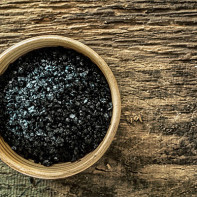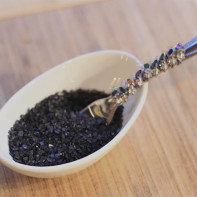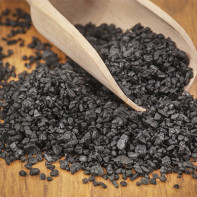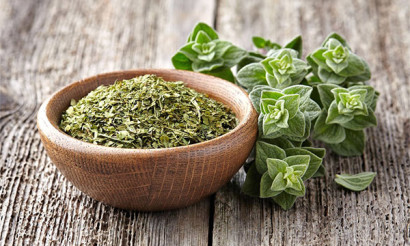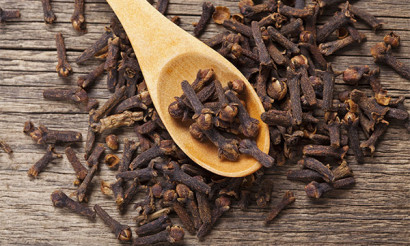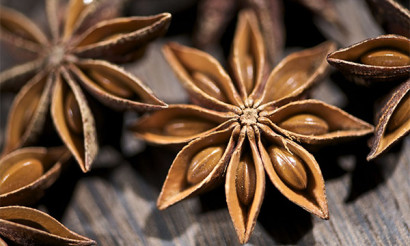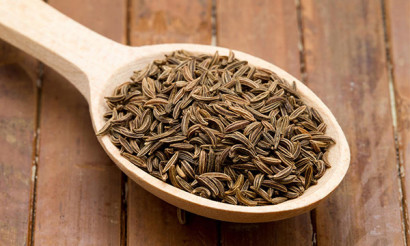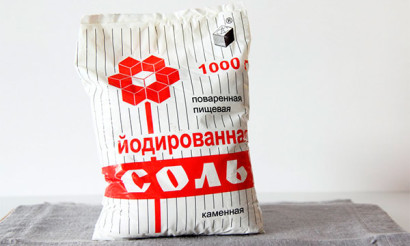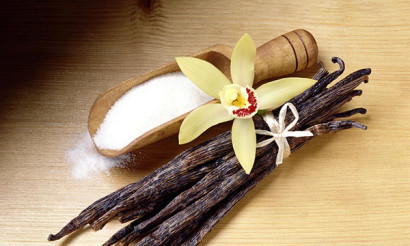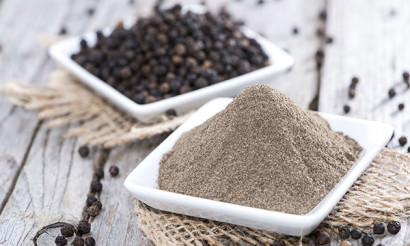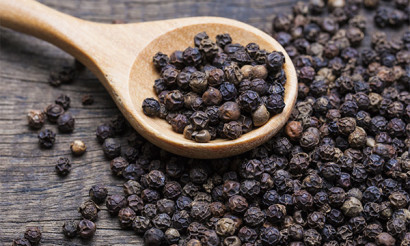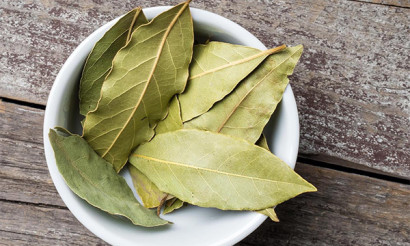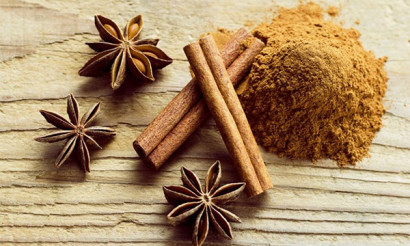Black salt: benefits and harm to the body
There are many varieties of salt in the world. At the same time, rock salt mined in mines can have different shades depending on which elements from the rocks fall there. As a rule, they give a pinkish or yellowish tint. But it happens that the impurities give a more saturated color, and such a product gets its own name - for example, black Himalayan salt. In addition, manufacturers can add some additives to ordinary rock salt. There are folk recipes for the preparation of such compounds - they also allow you to get black salt. Below will be considered various types of this product.
- What is black salt
- Kinds
- Composition and calorie content
- The benefits of black salt from Kostroma (Thursday)
- The benefits of black Himalayan (Indian) salt
- Black salt for weight loss
- Black salt in medicine
- The use of black salt in cosmetology
- For face
- For hair
- Black salt in cooking
- Harm and contraindications
- How to choose and store black salt
- How to make black salt at home
- Thursday Salt Recipe with Seasonings
- Fermented Black Salt Recipe
- Thursday Salt Recipe with Flour
- Interesting facts about salt
What is black salt
So, the basis of this product is always rock salt, to which these or those ingredients are added. However, several species differ in composition and origin.
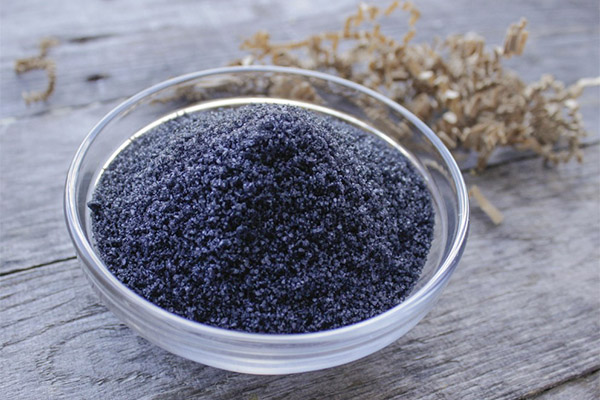
Kinds
The following types of black salt are distinguished:
- Indian (Himalayan). They are mined in Pakistan, India, Nepal. Such a salt is not subjected to additional purification and refining; therefore, its crystals have a pronounced dark pink with brown and even violet inclusions. An interesting color is obtained thanks to the mineral greigite. But salt has such a hue only in large crystals, and when it is ground, pink is more noticeable. In India, this salt is additionally heated in ceramic vessels to very high temperatures, while adding oriental spices, as well as ebony seeds, which are called "Harad". This makes salt even more beneficial by increasing the amount of valuable trace elements. And its shade becomes more saturated.
- Lava. “Black lava salt” is often written on the packaging to emphasize the volcanic origin. In fact, this is sea salt, which is most often produced in Cyprus and Hawaii. It is positioned as a means for detoxification, and by its abilities resembles activated carbon. This salt contains less sulfur compounds, but has a more earthy taste.
- Thursday black salt. It is often called Kostroma, because the original recipe was invented in Kostroma, although there was a version in almost every province. Initially, this salt was made from ordinary stone, roasting it in a wood oven with rye flour. In some provinces, cabbage leaves, kvass, and spicy herbs were used for this. Under the influence of high temperature impurities of heavy metals were destroyed. Also, rye flour provided black salt with a mineral-rich composition. It was prepared only on Thursday at Holy Week and was consecrated in the church on Easter Sunday, so in a sense it has a ritual significance. Although the Orthodox Church denies this and the use of black salt is not welcome.
The Himalayan or Indian black salt is considered the most beneficial for health, although, unlike other species, it contains hydrogen sulfide in rather large quantities. But it is this substance that helps to normalize blood pressure and remove excess weight.
Composition and calorie content
Quaternary salt, depending on the method of preparation, contains 3-5 kcal per 100 g. If we consider the composition of black Thursday salt, we can pay attention to the fact that 85–94% of its composition is sodium chloride, and the rest is bread ash. But in fact, it is she who is useful.It contains calcium, magnesium, potassium, copper and iron oxide ions (which is why it can prevent anemia). It should be noted that in white salt, sodium chloride occupies about 98% of the volume, that is, there are much less other useful minerals in it.
Thus, as a result of firing, the amount of heavy metals in the Thursday salt is significantly reduced, as well as the chlorine content.
The energy value of Himalayan salt is low. It contains only 5 kcal per 100 g. In total, its composition includes more than 80 active components. Himalayan salt also contains less sodium chloride than ordinary salt. Plus, it has hydrogen sulfide, which improves the functioning of the digestive system and the cardiovascular system.
The benefits of black salt from Kostroma (Thursday)
In ancient times, Thursday's salt was attributed to almost magical properties. It was believed that in case of any illness it was enough to simply pour a pinch of black salt into a glass of water, stir and give a drink to a person - after this the disease will pass. Actually, of course, this is not so, but there is a certain logic in this. Quaternary salt contains carbon in the form of finely porous coal. It acts just like any other enterosorbent, that is, it removes toxins from the body. This actually improves well-being, and also helps to cope with food poisoning and quickly get rid of signs of allergies.

In addition, quaternary salt has other beneficial properties. She is:
- normalizes digestion, eliminates constipation and bloating;
- improves appetite;
- enhances natural immunity;
- eliminates muscle cramps;
- normalizes blood composition;
- reduces the acidity of gastric juice;
- improves nervous activity.
At the same time, unlike ordinary salt, it does not retain water in the body, so that even with arterial hypertension it can be used (of course, in moderation).
In cosmetology, black salt is used to treat acne, because in this respect it performs the same functions as masks containing activated carbon - it removes toxins, cleans pores and even has an antiseptic effect.
The benefits of black Himalayan (Indian) salt
Himalayan salt has many beneficial properties. In particular, she:
- Increases immunity.
- Prevents troubles such as heartburn, increased gas, bloating.
- Normalizes intestinal muscles due to the increased content of potassium and magnesium.
- Relieves cramping and pain in the abdomen (also due to the large amount of potassium).
- It allows you to maintain hormonal balance, including due to the normal level of melatonin and serotonin, so its use improves the emotional state.
- It normalizes blood sugar, which is very important for type 2 diabetes.
- Due to its unique mineral composition it prevents the development of osteoporosis.
- Regulates metabolic processes, which helps to lose weight.
- It reduces the level of "bad" cholesterol in the body, which is very useful for the prevention of cardiovascular diseases, especially since a number of studies show that it does not retain fluid. Unlike regular salt, Himalayan does not increase blood pressure.
In traditional oriental medicine, it is also believed that black Himalayan salt can relieve pain from joint diseases. Also, this product is considered useful in inflammatory diseases of the respiratory tract. On the one hand, it improves sputum removal, on the other, it eliminates inflammation itself.
Black salt for weight loss
Replacing ordinary salt with black in various dishes already helps to normalize digestion, remove toxins and excess fluid and get rid of extra pounds. However, a saline solution may additionally be used for these purposes. It is best to use Himalayan salt, because it contains more minerals, but Thursday is also suitable.
A sufficiently strong 25–26% salt solution should be made - 1 teaspoon of the fine fraction in a glass of water.This saline solution is taken 1 teaspoon in a glass of water and drunk on an empty stomach to speed up metabolism, improve digestion and remove toxins. At first, it may seem that the remedy acts negatively - for the first few days some people have an indigestion. But this only says that toxins are actively eliminated. These discomforts pass very quickly. The duration of treatment is one month. During the year it can be repeated no more than three times.
Black salt in medicine
In folk medicine, black Himalayan salt is used as a solution. Cook it at home. Take a glass, pour 1 teaspoon of salt on the bottom (or put a few cubes 2-3 cm in size), and then pour a full glass of water and leave for a day. If after this time the salt does not dissolve completely, an approximately 26–27% solution is obtained, which corresponds to the salinity of ocean water. If salt is not visible at the bottom, then it needs to be added a little more, and in a day the solution will be ready. It is stored for a long time in a jar with a closed lid.
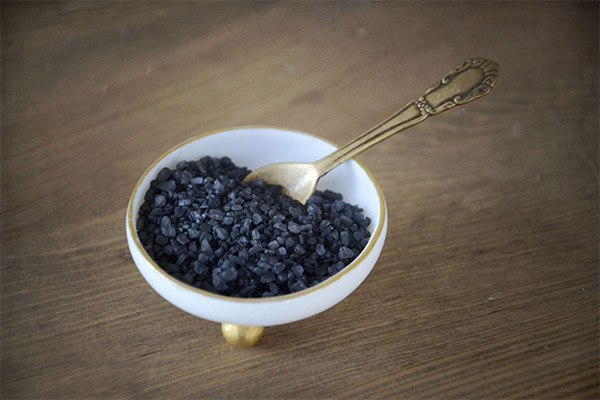
This saline solution can be used for different purposes:
- To relieve swelling of the legs, compresses are made from the solution, applying pieces of cotton fabric to problem areas and fixing them for 20-30 minutes. You can also make baths from saline to relieve puffiness of the foot.
- For the treatment of respiratory diseases accompanied by a cough with profuse discharge of sputum, the saline solution is poured into a kettle, brought to a boil, and cooled for 5 minutes. A cone rolled sheet of paper is inserted into the teapot spout, and steam is breathed over it.
- For the treatment of pain in the joints make baths with saline. The water temperature should be at least 37 degrees.
- With inflammation of the tonsils and with the appearance of an unpleasant odor from the mouth, you should gargle with saline 3-4 times a day.
But for the health of teeth and gums use a different recipe. Olive oil is mixed with Himalayan finely ground salt, the resulting mixture is used to brush your teeth and massage your gums to avoid tooth decay and inflammatory diseases. To increase the efficiency, it is recommended to add to the mixture a couple of drops of eucalyptus essential oil or peppermint, you can also take lemon oil.
From periodontal disease and bleeding gums, quaternary salt is also used. To do this, take 2 parts of flower honey and 1 part of black salt, mix and use the resulting paste to massage the gums.
The use of black salt in cosmetology
For face
You can make the following skin masks based on black (Thursday) salt:
- For skin firmness. 1 tbsp. a spoonful of sour cream is mixed with 1 teaspoon of black salt. The mixture is applied to the skin for 10-15 minutes, then washed off with water. If you add a little lemon juice to it, you will also have a whitening effect.
- For aging skin care. Take 2 tablespoons of any flour, raw yolk, 1 teaspoon of Thursday salt, a little flower honey and yogurt. All this is mixed, applied to the face and held for 10 minutes, and then washed off with warm water.
- Himalayan black salt can be used for the following masks:
- Vitamin. For 1 tsp salt take 1 tbsp. a spoonful of thick fat cream, 2 tbsp. tablespoons of kiwi or strawberry puree, mix, apply to the skin for 5-10 minutes, rinse with cool water, moisturize with a regular cream.
- Anti-aging. For 1 teaspoon of Himalayan salt they take the same amount of honey and twice as much kefir, mix, add 1 tbsp. a spoon of low-fat cottage cheese (it is best to take non-grained). The resulting mixture is applied to the skin of the face, massaging gently, left for 10-15 minutes, then washed off with cold water and a moisturizer is applied.
- Cleansing. On 1 tbsp. spoon of Himalayan salt of medium grinding take the same amount of natural coffee, which must first be ground and mixed with literally half a teaspoon of water to get thick. The mask is applied carefully so as not to injure the skin of the face. Then lightly massage the surface and rinse with warm water.
Salt-based masks cannot be made if the skin has open sores, scratches, or irritation.
For hair
In folk medicine, Himalayan black salt is used for hair care. It helps get rid of seborrheic crusts and dandruff. You can simply apply a small amount of salt to wet hair and massage gently, and after 20 minutes rinse without using shampoo. After this, it is recommended to apply a ready-made moisturizing mask or conditioner. The hair is then dried naturally without the use of a hair dryer.
You can use saline for hair - 1 tbsp. spoon on a glass of hot water. In this solution, a piece of thin linen cloth is moistened and with its help the scalp is massaged for half an hour. Then the hair is washed with warm water.
Finally, Himalayan salt can be added to a nourishing mask - half a teaspoon is mixed with 1 teaspoon of honey, 1 tbsp. spoonful of mustard powder, raw yolk and 3 teaspoons of olive oil. If the hair is prone to oily, add lemon juice to this. The mask is left for 15-20 minutes and washed off with warm water.
Black salt in cooking
Black Thursday salt has always been an element of Easter breakfast. Boiled eggs are dipped into it, and it is really very tasty. Properly cooked in a wood oven, the salt smells like wood logs and very little hydrogen sulfide, like mineral water, so the smell does not deter. Salt also goes well with boiled potatoes, as its loose flesh quickly absorbs salt crystals and softens their taste and aroma. It is combined with vegetable and mushroom dishes.
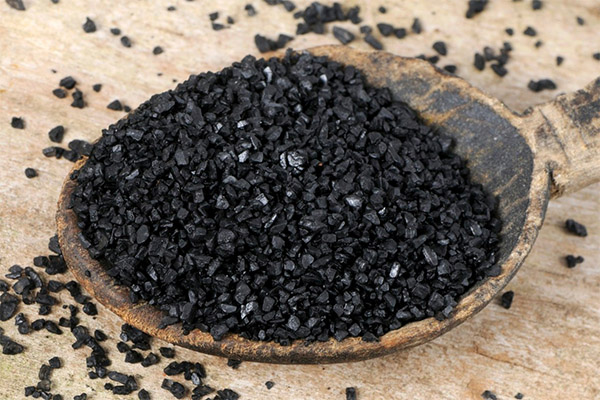
For example, you can make a salad with salted mushrooms, ripe tomatoes and red onions. For 4 servings of salad, take 3-5 tomatoes (depending on size), 250-300 g of salted mushrooms (best Russula), 2 cloves of garlic, half a red onion, up to 1 teaspoon of Thursday salt, pepper to taste. Season the salad with vegetable oil, preferably unrefined, with a smell. Tomatoes are washed and cut into slices, garlic into slices, and onions into thin half rings. Mushrooms do not need to be cut, but it is recommended that they be washed with cold water to remove brine and excess salt from them. Then all the ingredients are mixed and seasoned with sunflower oil and Thursday salt.
Harm and contraindications
Although all types of black salt are considered beneficial, they still have a number of contraindications. So, if arterial hypertension such a salt helps to reduce pressure, then in the presence of a strong degree of hypertension, sodium chloride will still have a negative effect, so it is better to exclude the product from the diet. This also applies to chronic kidney disease and heart failure - with them, black salt is contraindicated.
How to choose and store black salt
The so-called black Himalayan (Indian) salt is not really black. In general, it is of two types. Firstly, it is black Himalayan salt, which actually has a dark pink tint. It is mined directly in the Himalayas, northern India, etc. Its color is due to the high content of iron sulfite. Such a salt can be used in cooking, but it has a specific odor, which is associated with the adsorption of hydrogen sulfide on the surface of crystals. Many do not like this smell. But, if the Himalayan salt stays open for some time, the smell disappears.
Secondly, there is black Indian salt Kala Namak. It also has a dark pink tint when dry, but if liquid gets on it, then it becomes dark. Despite the specific sulfur taste and smell, in India it is widely used in cooking. Moreover, it is often added to ready-made spice mixtures, for example, “garam masala”.
It is clear that there are enough fakes in the market. Therefore, you can buy Himalayan and Indian salt only from trusted sellers. Natural product is produced only in India, Nepal and Pakistan. The composition should be indicated on the package. This Indian salt does not contain any additives.To be sure, you need to buy a test sample, check whether it has a sulfurous smell, and also dissolve in water and observe in a day if any precipitate has appeared.
As for storage, the Himalayan salt must be stored in a glass container with a tightly screwed lid so that water does not enter. It is best if the container is made of thick glass, because the sun's rays destroy the beneficial components contained in the crystals. Temperature differences should also be avoided.
It is not necessary to do the quaternary black salt ourselves, you can buy ready-made, just carefully read the composition. One of the advantages of a high-quality finished product is that it is burned in a wood stove, and at home this is not always possible.
After the consecration of Thursday's salt, it is stored for a year, until the next Easter. To do this, you need a linen bag or an opaque container with a tightly screwed lid. Salt should be protected not only from sunlight and moisture, but also from prying eyes.
How to make black salt at home
Despite the fact that today it is easy to find quaternary salt, many housewives prefer to cook it on their own. Various methods are used for this.

Thursday Salt Recipe with Seasonings
Quaternary salt can be made with seasonings and rye bread. For 1 kg of large non-iodized salt take 5-6 tbsp. tablespoons of crushed dry herbs (oregano or oregano, rosemary, savory, mint, dill, etc.), as well as 4 loaves of rye bread. The latter is recommended to pre-soak in water. All ingredients are mixed with salt, spread in a cast-iron mold and calcined in the oven until the mixture is charred. Then it is cooled, crushed and screened black dust, and the finished salt is poured into a glass container and tightly closed with a lid.
Fermented Black Salt Recipe
The classic version is black salt with leaven, it was it that was most often done by Russian housewives. In modern conditions, you need to act as follows. You should buy coarse salt (but not iodized) and move it with leavened ground - this mass remains after the wort is prepared. The proportions are as follows: salt should be 4 times less than wort, for example, 100 g to 400 g. Salt and grounds should be carefully moved, and then placed in a large metal pan (only without a plastic handle) or in a cauldron and calcined in the oven until carbonization of this mass. Then the product is cooled, thoroughly crushed, and fine black dust must be weeded out.
The finished product is poured into a dry glass container with a tightly screwed lid. Such salt, if desired, can be used instead of table salt.
Thursday Salt Recipe with Flour
A pack of coarse rock salt and 1.5 cups of rye flour is poured into the pan, mixed with a wooden spoon and the mixture is gradually calcined to black. There is no particular smoke, but the salt is not completely black, but rather dark gray. But it is easy to grind it to a state of powder.
Interesting facts about salt
Many believe that salt has only its own taste, but this is not entirely true. To understand this, you need to add it to other products with a pronounced taste, and you will notice that the salt can enhance or soften it. For example, if you add it to freshly squeezed grapefruit juice, it will become less bitter. If a little salt is poured into a milk banana shake, its taste will be deeper. In addition, salt enhances all other flavors. It can also be used as a preservative, as it creates an environment in which pathogenic bacteria cannot survive.But beneficial microorganisms, for example, lactobacilli, in such an environment just develop well.
Interestingly, salt is not only black. It all depends on what other additives it contains. For example, pink salt is mined in Poland, Chile, Bolivia, Australia, and even in Russia, more precisely - in the Crimea. There, on Lake Sasyk-Sivash, unique natural conditions developed - under the influence of microorganisms and algae, the salt acquires a coral pink hue. In salt lakes located in the lower Volga, pink salt was also mined once, which received an unusual color due to microorganisms. But at the same time, such a product still had a subtle aroma of violets. This salt was delivered to the court of Catherine the Great.
But red Hawaiian salt got its shade due to iron impurities in volcanic clay. Previously, it was used for different ceremonies - for example, canoeing was done so that they would not drown. Today it is used mainly for culinary purposes.
There are also very beautiful salt crystals that look like gems of a dark purple hue. Such are found, for example, in Austria, Germany, Spain. Its color is uneven, it rather resembles stripes. However, if you dissolve it in water, you get a completely transparent liquid. Scientists believe that this is not due to the presence of chemical additives, but to radioactive exposure, especially since such salt is found only in certain places, and it simply does not exist outside of Europe.
Although black salt is sanctified in the church, in reality it is not related to genuine Orthodox rites. Moreover, earlier the church tried to fight them. In particular, when the Stoglav Cathedral was convened in 1551, it was forbidden by his decision to consecrate the black salt, since it was considered paganism and heresy. Moreover, violators were punished severely - they were spewed out of their dignity. However, this did not affect popular superstitions.
In most cases, science has not proved the fact that red, pink and yellow colored salts are something more useful than usual. In addition, the black salt containing coal, and in fact can be used as an enterosorbent, and also has the properties listed above. However, it should be remembered that those colored salts that are sold in stores often contain artificial additives.
«Important: all information on the site is provided exclusively in fact-finding purposes. Before applying any recommendations, consult with a profile specialist. Neither the editors nor the authors are liable for any possible harm caused materials. "

